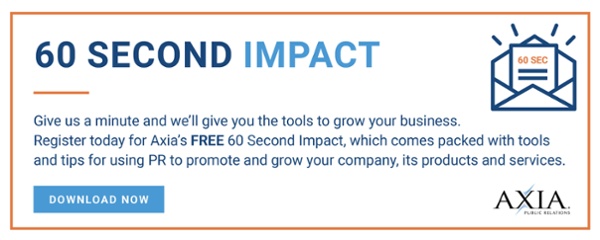 Content is key to attracting your ideal consumers
Content is key to attracting your ideal consumers
Creating interesting and informative content is the key to successful inbound marketing. Companies around the world earn attention and respect by producing content that intrigues prospective clients and helps them find the information they’re looking for. Great content is accessible, concise, educational and unique. It is never solely promotional.
When prospective customers read an article or post, they don’t want to feel pressured to buy a product or service immediately. They simply want to learn more about a topic of interest, a solution to a problem or steps to achieve a goal. Businesses need to produce content with the purpose of enlightening and delighting potential customers. When creating purposeful content, marketers should consider the characteristics of their buyer personas, determine the best way to distribute information and develop an effective strategy for analyzing responses to the content.
Know your buyer persona
Always analyze your target audience when planning content. Effective marketers create content that engages the reader and relates to his or her interests. When creating content, pay attention to what stage of the buyer’s journey your buyer personas are in.
Awareness stage: Potential customers are realizing that they have a problem in their lives and are in need of a solution. For this stage, companies should produce content that helps the reader identify the problem and also create a goal to fix the issue. At this stage, potential customers are typically just becoming familiar with your company, so the information should be solely educational and not promotional. The content should intrigue the reader and compel her to want to read more.
Consideration stage: In this stage of the buyer’s journey, potential customers have successfully identified their problems and now need answers. The content in this stage should offer an effective solution to those problems that relates to the product or service your company is selling.
Decision stage: Companies should produce content that explains why their products or services are the best solution to the buyer persona’s problem. In this stage, the content can be promotional, but should still remain engaging and fresh. It should delight the customer and make him want to conduct further business with the company.
Distribute effectively
Distributing content through channels that will best reach the target buyer personas, depending on where they are in the buyer’s journey, is another important part of the experience. In order for a company to successfully sell a product or service, content needs to reach the right people at the right time.
The most effective ways to publish content are through social media, on websites, in blogs or through marketing emails. Companies should constantly be publishing new content to show perseverance and to keep their customers interested. Stale content and irregular posting can turn a potential buyer off. For every post, the writer should include a link to more content or a call to action so the reader always has something more she can learn about the problems she has that your company can solve for her. Eventually these links can lead to purchasing pages, landing pages and thank-you pages if the reader becomes a buyer.
Analyze the response
It’s important to analyze content performance in order to create goals and identify weaknesses. By analyzing the effectiveness of their content, businesses can come up with the best tactics to reach potential clients.
There are various methods of determining whether content achieved its purpose. These methods include studying how many times a post was viewed and/or shared and how many leads were generated through that post. If the content had a large number of shares and produced many leads, the author should continue building on that content to keep readers engaged. However, if the content proved unsuccessful, the author should probably go in another direction for future posts. Good content will keep a prospective customer interested and always wanting to read more.
Contact us for more information on inbound marketing or register for our 60-Second Impact for tips on using PR to promote and grow your company.
 Pauline Blum is a marketing student at Tulane University in New Orleans, Louisiana. She plans to graduate in May 2017 with a Bachelor of Science in marketing.
Pauline Blum is a marketing student at Tulane University in New Orleans, Louisiana. She plans to graduate in May 2017 with a Bachelor of Science in marketing.
 Featured image credit: www.bigstockphoto.com
Featured image credit: www.bigstockphoto.com
Topics: public relations, inbound marketing, shared media

Comment on This Article